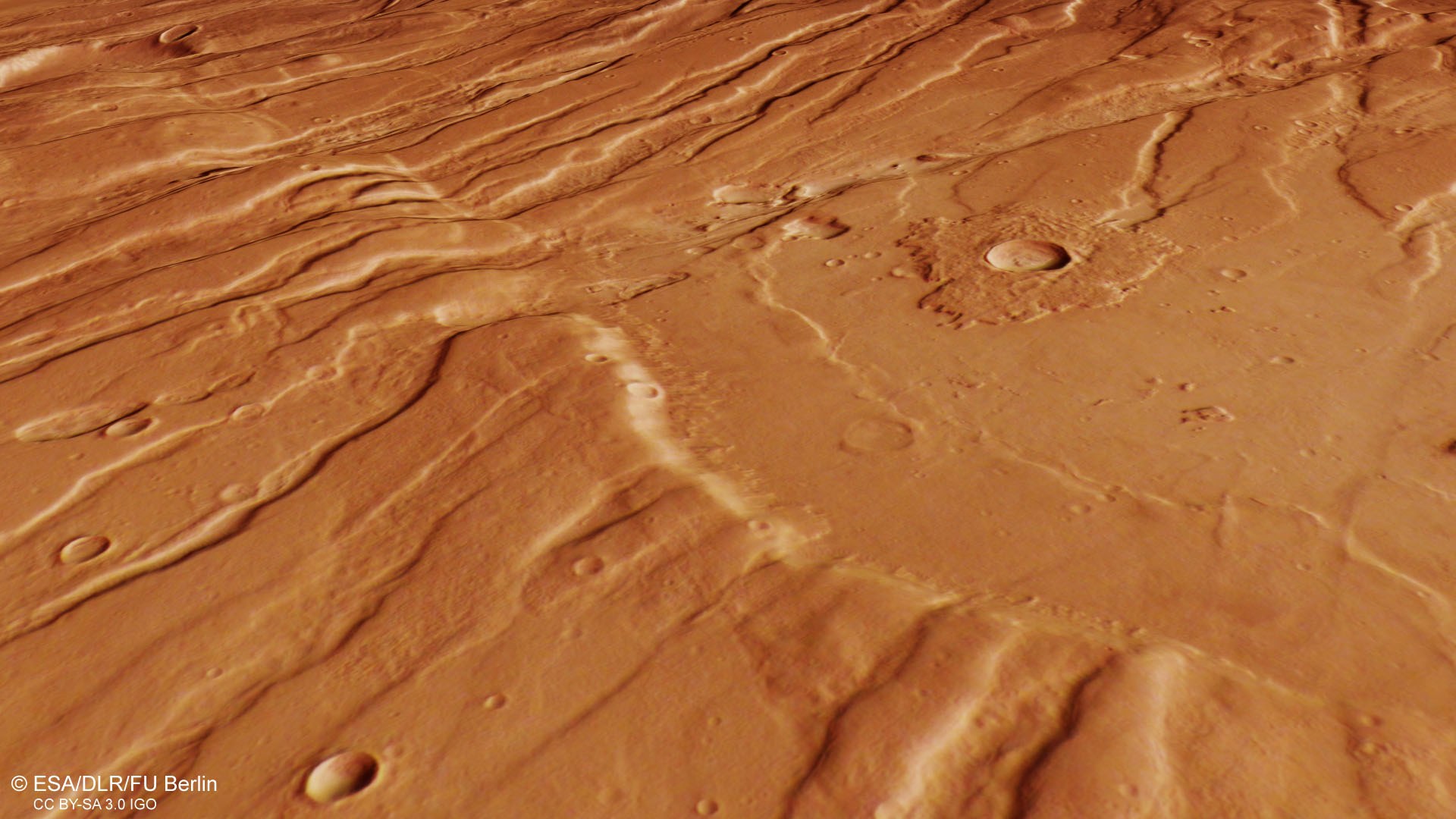Oblique perspective view of horsts and grabens in Ascuris Planum
Oblique perspective view of horsts and grabens in Ascuris Planum
Tectonic forces have created a characteristic pattern of parallel, linear fracture structures in Ascuris Planum, the northernmost part of the Tempe Terra region to the northeast of the Tharsis Ridge. As a result of rising magma pockets, the Martian crust was stretched, causing crustal blocks to subside along fracture surfaces and form tectonic grabens. In between, the horsts remained as raised crustal blocks. The grabens are partly filled by debris-covered glaciers, which are characteristic of all steeper slopes at these latitudes. The ejected material of a small crater (centre right of the image) rises like a platform above the surrounding landscape. Such crater surroundings are formed when the ejected material is much more resistant to erosion processes than the surface rock. They form an erosion-resistant layer which, after the surrounding material has been removed, create a plateau around the crater.

